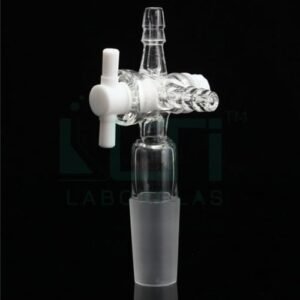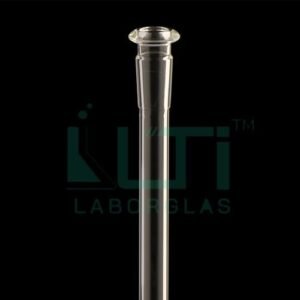Pipette Stand (Vertical)
- This is a stable, non-corrosive, detachable stand which can hold 28 pipettes with maximum dia 14 mm
- The heavy base measures 225 mm in diameter and a Polypropylene coated square rod measuring 375 mm in length is screwed into the base
- The top disc that can be fixed on the rod has holes for holding pipettes while the lower one has pilot holes where the pipettes tips rest and liquids drain down to the base
- These discs can be adjusted on the rod according to the length of the pipette
- The arrows provided on the discs should be kept parallel to ensure that corresponding holes are being centered.
Material : Polypropylene
| PART No. | TYPE | Pack QTY. |
| 3550 | FOR 28 PIPETTE | 10 |
Here are some common uses and benefits of a vertical pipette stand:
- Pipette Organization: The primary purpose of a vertical pipette stand is to provide a designated and organized storage space for pipettes. This helps prevent pipettes from being misplaced or damaged when not in use.
- Easy Access: Placing pipettes vertically in a stand allows for quick and easy access to the pipettes. This is particularly useful in laboratories where users need to grab a pipette quickly for various tasks, contributing to efficient workflow.
- Space Optimization: Vertical pipette stands are designed to take up minimal bench space. They have a small footprint, making them suitable for laboratories with limited workspace.
- Reduced Contamination: While horizontal stands are often used to prevent liquid from entering the pipette barrel, vertical stands can still offer protection by keeping the tips elevated. This helps minimize the risk of contamination, especially when pipettes are stored after use.
- Drying Pipettes: After cleaning or autoclaving, pipettes can be placed vertically in the stand to air-dry. This facilitates thorough drying and prevents the retention of moisture, which could impact the accuracy of liquid dispensing.
- Compatibility with Multiple Pipette Types: Vertical pipette stands are typically adjustable and compatible with various types and sizes of pipettes. They can accommodate different models, including volumetric pipettes, serological pipettes, and micropipettes, making them versatile in laboratory settings.
- Visual Inspection: Pipettes stored vertically are easily visible, allowing users to perform visual inspections. This is important for checking the cleanliness of the pipette and ensuring that there are no visible defects before use.
- Stability: Vertical pipette stands are designed to provide stability for pipettes. Pipettes are held securely in place, reducing the risk of tipping or falling, which could lead to damage.
- Minimizing Tip Damage: Storing pipettes vertically, especially in stands with individual slots or compartments, helps minimize the risk of damage to the tips. This is important for preserving the precision of liquid dispensing.
- Laboratory Hygiene: Vertical pipette stands contribute to maintaining a clean and organized laboratory environment. They help prevent pipettes from coming into contact with laboratory surfaces and potential contaminants.
- Routine Pipette Storage: Vertical stands are suitable for the routine storage of pipettes when not in use, ensuring that they are readily available for laboratory tasks.







